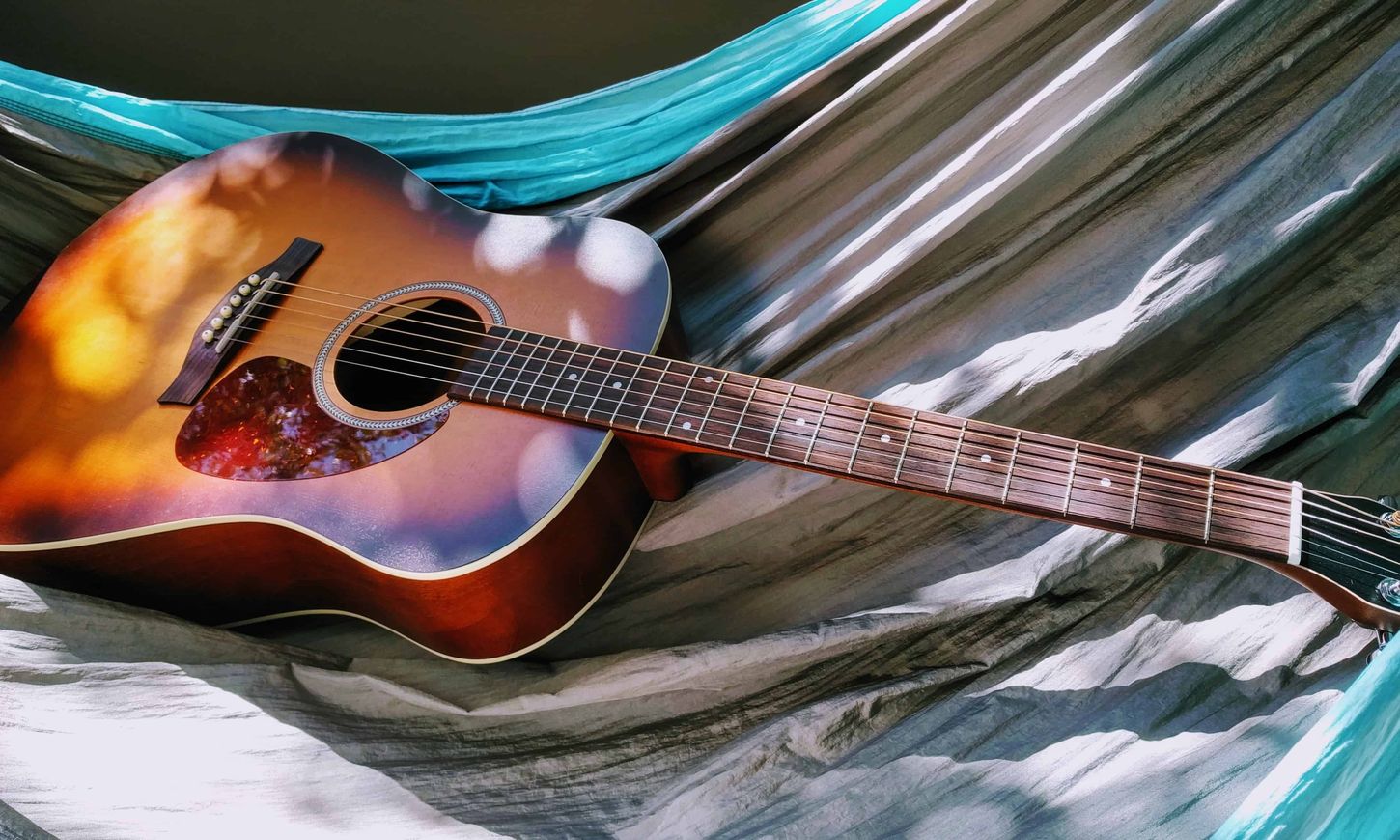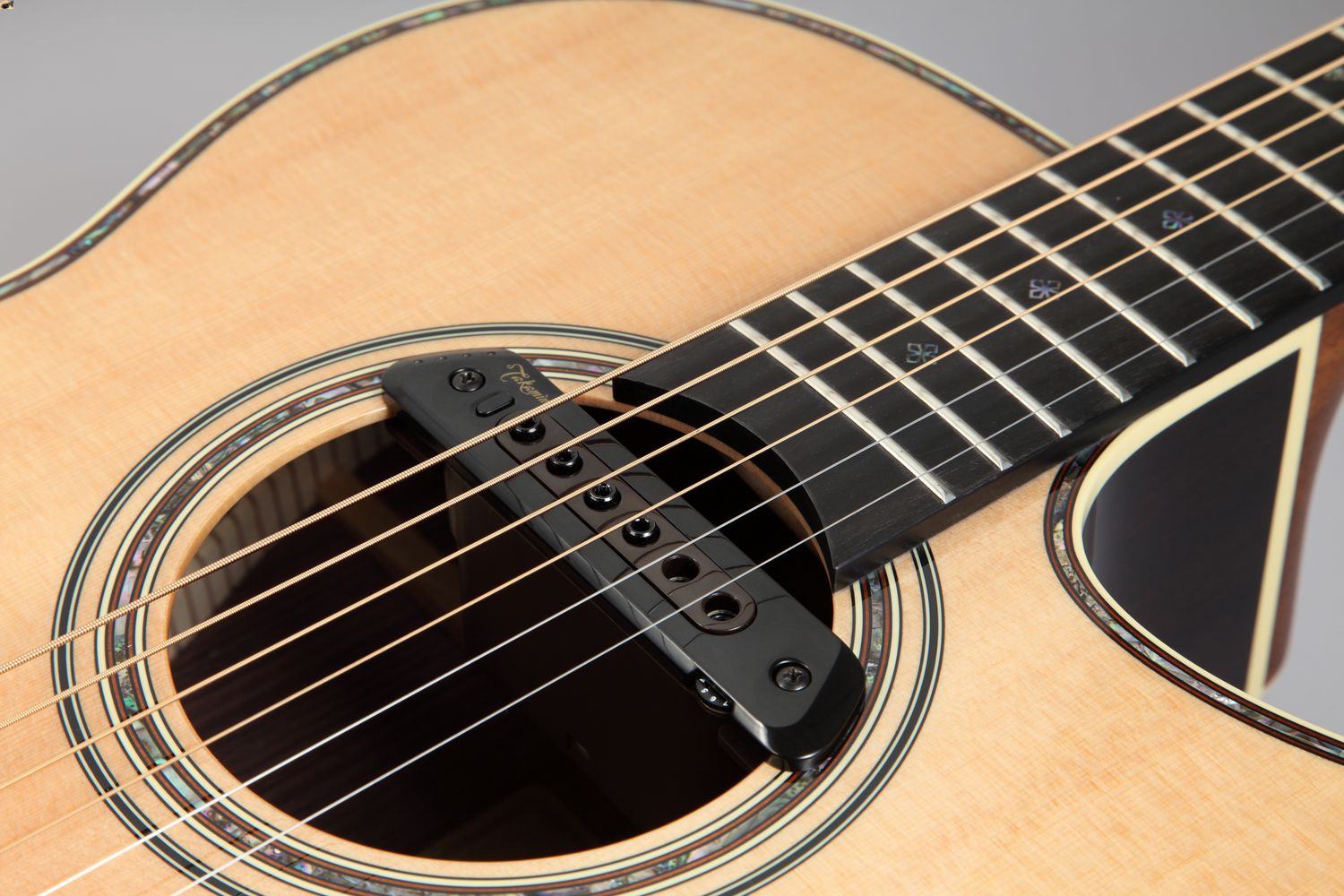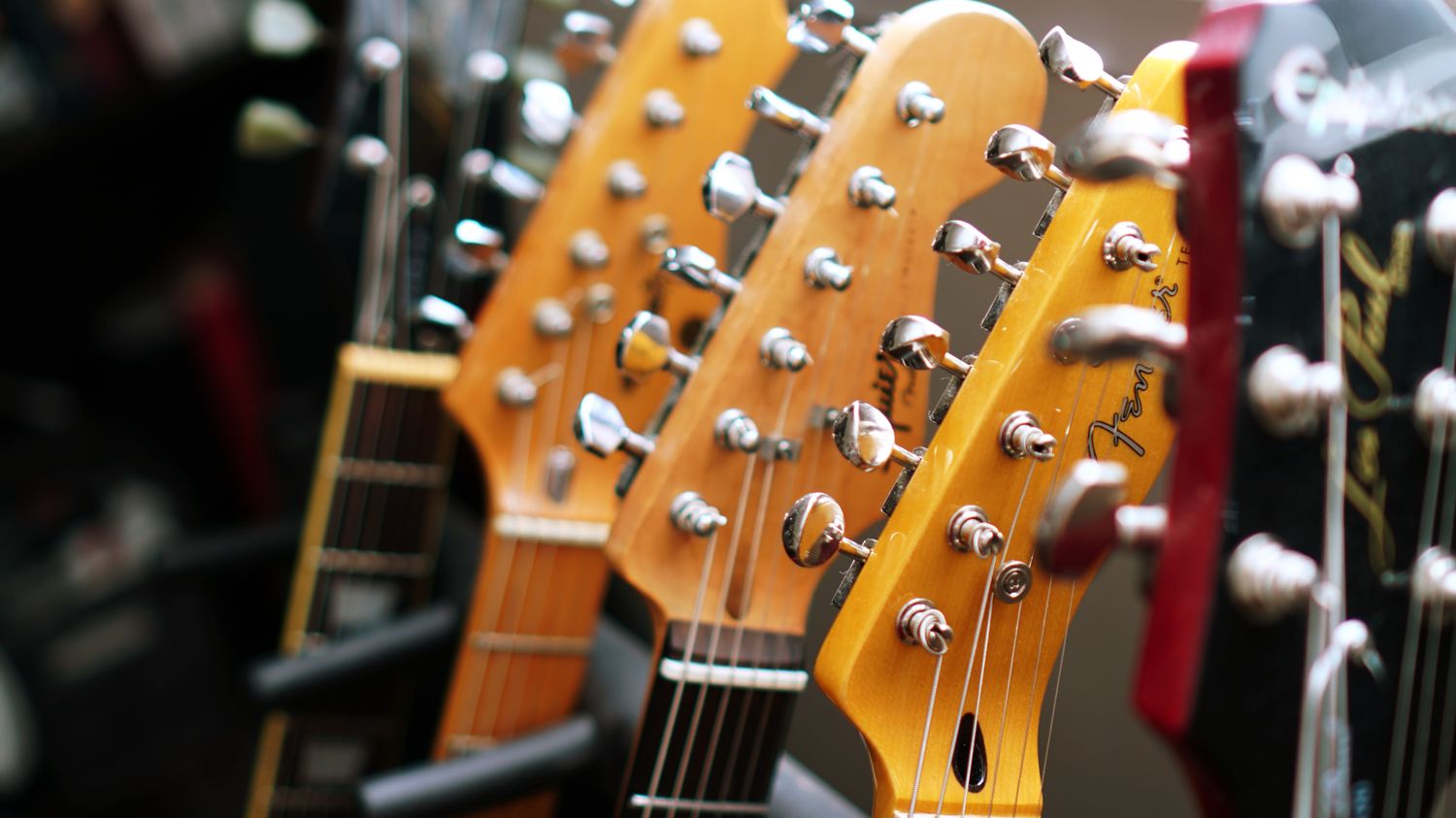Home>Production & Technology>Acoustic>How To Make My Acoustic Guitar Electric


Acoustic
How To Make My Acoustic Guitar Electric
Published: March 12, 2024
Learn how to easily convert your acoustic guitar to an electric one. Discover the best methods and tools for a seamless transition. Unlock the potential of your acoustic guitar today!
(Many of the links in this article redirect to a specific reviewed product. Your purchase of these products through affiliate links helps to generate commission for AudioLover.com, at no extra cost. Learn more)
Table of Contents
Introduction
Converting an acoustic guitar into an electric one can open up a whole new world of sonic possibilities. By adding a pickup and connecting it to an amplifier, you can transform the warm, natural sound of your acoustic guitar into a powerful, electrified tone that's perfect for live performances and recording sessions. Whether you're a seasoned musician looking to expand your sonic palette or a beginner eager to experiment with different sounds, electrifying your acoustic guitar can be a rewarding and exciting endeavor.
In this comprehensive guide, we will walk you through the step-by-step process of making your acoustic guitar electric. From choosing the right pickup to adjusting the sound and tone, we'll cover everything you need to know to successfully electrify your instrument. By the end of this guide, you'll have the knowledge and confidence to take your acoustic guitar to the next level and unleash its full potential in a variety of musical settings.
So, grab your acoustic guitar, buckle up, and get ready to embark on an electrifying journey as we delve into the fascinating world of acoustic-electric guitars. Whether you're aiming to rock the stage with electrifying riffs or simply explore new sonic territories in the comfort of your own home, this guide will equip you with the essential know-how to make your acoustic guitar electric. Let's dive in and discover the electrifying possibilities that await!
Step 1: Choose the Right Pickup
When it comes to electrifying your acoustic guitar, selecting the right pickup is crucial in shaping the tone and overall sound of your instrument. There are various types of pickups available, each with its own unique characteristics and sonic qualities. Understanding the different pickup options will help you make an informed decision that aligns with your musical preferences and playing style.
-
Soundhole Pickups: These pickups are easy to install and are placed directly into the soundhole of the guitar. They are a popular choice for their convenience and versatility, making them suitable for a wide range of musical genres.
-
Under-Saddle Pickups: Positioned beneath the saddle of the guitar, under-saddle pickups are known for their ability to capture the natural acoustic sound of the instrument. They are favored for their clarity and fidelity, making them an excellent option for musicians seeking a balanced and authentic electric tone.
-
Soundboard Transducer Pickups: These pickups adhere to the soundboard of the guitar, capturing the vibrations and nuances of the instrument's top wood. They excel in reproducing the acoustic guitar's natural resonance and are favored for their warm and organic sound.
-
Microphone Pickups: Utilizing miniature microphones, these pickups capture the acoustic guitar's sound with remarkable detail and sensitivity. They are prized for their ability to convey the instrument's tonal complexities and are often favored by musicians who prioritize a natural and expressive sound.
When choosing a pickup, consider factors such as tonal characteristics, ease of installation, and compatibility with your playing style. Additionally, explore the option of a combination pickup system, which integrates multiple pickup types to offer a diverse range of tonal possibilities.
By carefully evaluating the sonic attributes and practical considerations of each pickup type, you can make an informed decision that aligns with your musical aspirations. The right pickup will serve as the foundation for achieving the electrified sound you desire, setting the stage for an exciting and fulfilling musical journey.
Step 2: Install the Pickup
Once you've chosen the perfect pickup for your acoustic guitar, the next step is to install it properly to ensure optimal performance and sound quality. While the installation process may vary depending on the type of pickup you've selected, the following general guidelines will help you navigate through the installation with confidence.
Soundhole Pickups
If you've opted for a soundhole pickup, the installation process is relatively straightforward. Begin by carefully inserting the pickup into the soundhole, ensuring that it is positioned securely and aligned with the strings. Many soundhole pickups feature adjustable screws or brackets that allow you to customize the height and placement for optimal sound capture. Once the pickup is in place, connect the output jack to the guitar's endpin jack, securing the cable neatly along the guitar's body to prevent interference with your playing.
Under-Saddle Pickups
Installing an under-saddle pickup involves delicately removing the saddle from the bridge to make room for the pickup element. Carefully loosen the strings and gently lift the saddle from its slot, taking care not to damage the delicate components. Next, carefully position the pickup element beneath the saddle, ensuring that it aligns with the strings' contact points. Once the pickup is in place, reinsert the saddle and secure it firmly, making sure that the pickup element remains in its designated position. Finally, connect the pickup's output jack to the guitar's endpin jack, securing the cable along the guitar's interior to prevent any unwanted movement or rattling.
Soundboard Transducer Pickups
For soundboard transducer pickups, the installation process involves adhering the pickup element to the guitar's soundboard. Begin by cleaning the area where the pickup will be placed to ensure a secure bond. Carefully position the pickup on the soundboard, typically near the bridge or soundhole, and press it firmly to establish proper adhesion. Once the pickup is securely in place, connect the output jack to the guitar's endpin jack, ensuring that the cable is neatly routed along the guitar's body to minimize any potential interference.
Microphone Pickups
When installing a microphone pickup, precision and attention to detail are crucial. Begin by carefully positioning the microphone near the guitar's soundhole or within the body, ensuring that it is securely mounted and positioned to capture the instrument's acoustic nuances effectively. Once the microphone is in place, connect the output jack to the guitar's endpin jack, taking care to route the cable discreetly to avoid any obstruction while playing.
Regardless of the pickup type, it's essential to follow the manufacturer's installation instructions meticulously to ensure a seamless and reliable setup. By taking the time to install the pickup correctly, you'll be one step closer to unlocking the electrifying potential of your acoustic guitar, paving the way for countless musical adventures and creative exploration.
Step 3: Connect the Pickup to an Amplifier
With the pickup successfully installed on your acoustic guitar, the next crucial step is to connect it to an amplifier, allowing the electrified sound of your instrument to come to life. This pivotal connection serves as the bridge between your guitar's pickups and the amplification system, shaping the tone and projecting the sonic characteristics of your instrument with clarity and power.
To begin, you'll need an instrument cable with a 1/4-inch connector, commonly referred to as a "guitar cable." This cable serves as the conduit through which the signal from your pickup is transmitted to the amplifier. Ensure that the amplifier is powered on and set to an appropriate volume level before making any connections.
Start by inserting one end of the instrument cable into the output jack of your acoustic guitar. The output jack is typically located at the bottom of the guitar, near the endpin. Once the cable is securely plugged into the output jack, gently route the cable along the guitar's body, taking care to minimize any potential strain on the connection.
With the cable connected to your guitar, locate the input jack on the amplifier. This is where the other end of the instrument cable will be inserted. Ensure that the amplifier's input is compatible with the type of signal being transmitted from your pickup. Some amplifiers feature multiple input channels, each tailored to accommodate specific types of pickups or instruments. Select the appropriate input channel based on the specifications of your pickup and the desired tonal characteristics.
Once you've identified the correct input channel, insert the other end of the instrument cable into the amplifier's input jack, ensuring a secure and snug connection. Take a moment to double-check that both ends of the cable are firmly and properly seated in their respective jacks, minimizing the risk of signal loss or interference.
With the pickup now connected to the amplifier, you're ready to unleash the electrifying potential of your acoustic guitar. As you strum the strings and explore the sonic landscape of your instrument, the amplifier will faithfully reproduce the nuances and tonal intricacies captured by the pickup, projecting your electrified sound with clarity and impact.
By establishing a seamless connection between your pickup and amplifier, you've set the stage for an electrifying musical journey, where the expressive capabilities of your acoustic guitar are amplified and transformed into a dynamic and captivating sonic experience. Whether you're practicing in the comfort of your home or performing on stage, the connection between your pickup and amplifier will serve as the conduit through which your musical aspirations are realized, opening up a world of creative possibilities and sonic exploration.
Step 4: Adjust the Sound and Tone
After successfully installing the pickup and connecting your acoustic guitar to an amplifier, the next crucial step is to fine-tune the sound and tone to achieve the desired sonic characteristics. This pivotal adjustment process allows you to sculpt the electrified sound of your instrument, shaping its tonal qualities and sonic nuances to align with your musical vision and preferences.
1. Equalization (EQ)
One of the primary tools for shaping the sound of your electrified acoustic guitar is the amplifier's equalization controls. Most amplifiers feature a built-in EQ section, comprising knobs or sliders that allow you to adjust the levels of bass, midrange, and treble frequencies. Experiment with these controls to tailor the tonal balance of your guitar, emphasizing certain frequencies to achieve warmth, clarity, or brightness as desired.
2. Reverb and Effects
Many amplifiers offer built-in reverb and effects options, providing additional sonic enhancements to enrich the sound of your electrified acoustic guitar. Reverb adds spaciousness and depth to your tone, simulating the natural acoustics of different environments. Experiment with varying levels of reverb to create a sense of ambience that complements your playing style and musical genre. Additionally, explore the amplifier's effects options, such as chorus, delay, or modulation, to infuse your sound with captivating textures and sonic embellishments.
3. Gain and Volume
Adjusting the gain and volume controls on your amplifier allows you to fine-tune the level of distortion and overall output of your electrified acoustic guitar. By carefully balancing the gain settings, you can introduce varying degrees of overdrive or distortion, adding grit and intensity to your sound. Additionally, controlling the overall volume ensures that your electrified tone is projected with the appropriate level of presence and impact, whether you're practicing at home or performing on stage.
4. Feedback Control
As you explore the electrified capabilities of your acoustic guitar, it's essential to be mindful of potential feedback issues, especially when performing at higher volumes. Some amplifiers feature feedback control options designed to mitigate unwanted feedback frequencies, allowing you to achieve a clear and controlled sound without interference. Familiarize yourself with these feedback control features and utilize them to maintain a stable and feedback-free performance environment.
5. Fine-Tuning Pickup Settings
Depending on the type of pickup you've installed, you may have additional onboard controls or preamp settings that influence the sound and tone of your electrified acoustic guitar. Experiment with these settings to refine the pickup's output, adjusting parameters such as tone shaping, presence, and overall output level to achieve a sound that resonates with your musical expression.
By meticulously adjusting the sound and tone of your electrified acoustic guitar, you'll unlock a world of sonic possibilities, allowing your instrument to adapt to diverse musical contexts and creative endeavors. Whether you're seeking a warm and mellow tone for intimate acoustic performances or a bold and dynamic sound for energetic live shows, the process of sound and tone adjustment empowers you to tailor your electrified acoustic guitar to suit your musical aspirations, ensuring that your sonic identity shines through with clarity and distinction.
Conclusion
In conclusion, the journey of making your acoustic guitar electric opens up a realm of sonic exploration and creative possibilities. By carefully selecting the right pickup, installing it with precision, connecting it to an amplifier, and fine-tuning the sound and tone, you've embarked on a transformative musical endeavor that amplifies the expressive capabilities of your acoustic guitar.
The process of choosing the perfect pickup for your acoustic guitar involves a thoughtful consideration of tonal characteristics, installation convenience, and compatibility with your musical style. Whether you opt for a soundhole pickup, under-saddle pickup, soundboard transducer pickup, or microphone pickup, each choice brings forth unique sonic qualities that contribute to the electrified identity of your instrument.
Installing the pickup with attention to detail ensures that it seamlessly integrates with your acoustic guitar, capturing its natural resonance and nuances with fidelity. Whether it's delicately positioning the pickup beneath the saddle, adhering it to the soundboard, or securing it within the soundhole, the installation process sets the stage for a reliable and responsive electrified sound.
Connecting your pickup-equipped acoustic guitar to an amplifier marks the pivotal moment where your electrified sound comes to life. The seamless transmission of your instrument's sonic characteristics through the amplifier projects a dynamic and captivating tone, ready to accompany you on musical journeys, from intimate practice sessions to electrifying live performances.
Fine-tuning the sound and tone of your electrified acoustic guitar empowers you to sculpt its sonic identity, shaping its tonal balance, adding expressive effects, and controlling feedback to suit diverse musical contexts. The ability to adjust EQ settings, explore reverb and effects, balance gain and volume, and refine pickup settings ensures that your electrified sound resonates with clarity and distinction, reflecting your unique musical expression.
As you conclude this transformative process, your acoustic guitar has evolved into a versatile and electrifying instrument, ready to adapt to a myriad of musical genres and performance settings. Whether you're strumming gentle melodies in a cozy acoustic setting or unleashing powerful riffs on a grand stage, the electrified sound of your acoustic guitar stands as a testament to your musical creativity and sonic vision.
In the end, the journey of making your acoustic guitar electric transcends mere technical modifications; it represents a profound exploration of sonic identity and creative expression. With an electrified acoustic guitar at your fingertips, you're poised to embark on a musical odyssey filled with boundless sonic possibilities and captivating performances. Embrace the electrified sound of your acoustic guitar, and let your musical journey unfold with electrifying resonance and expressive depth.











